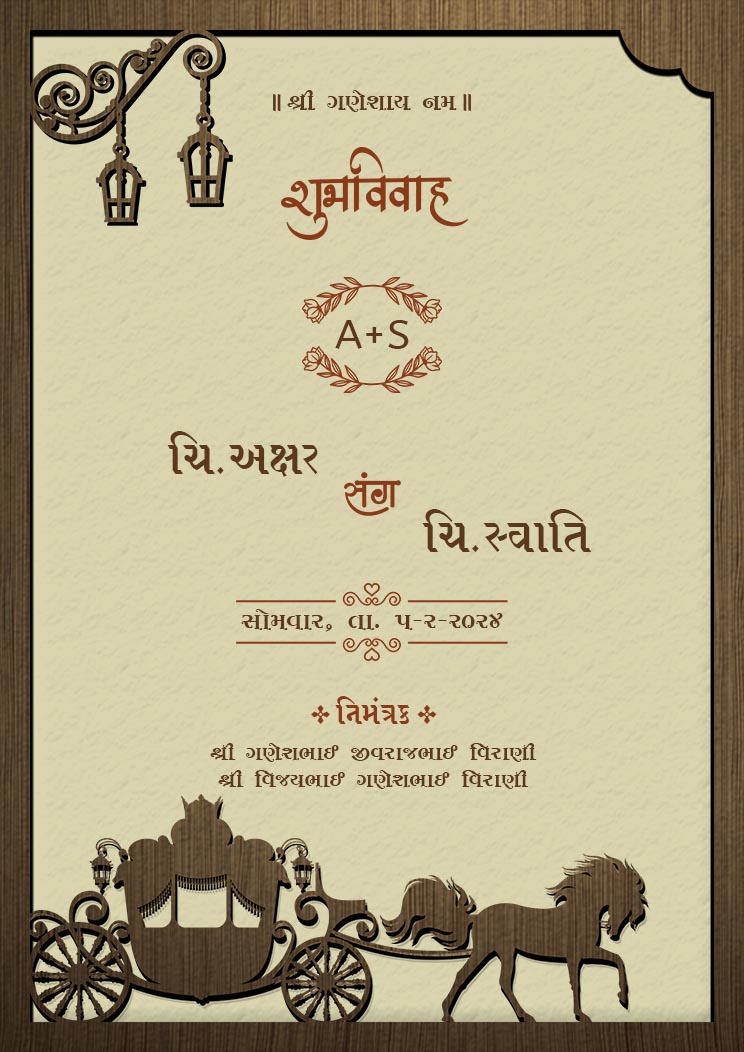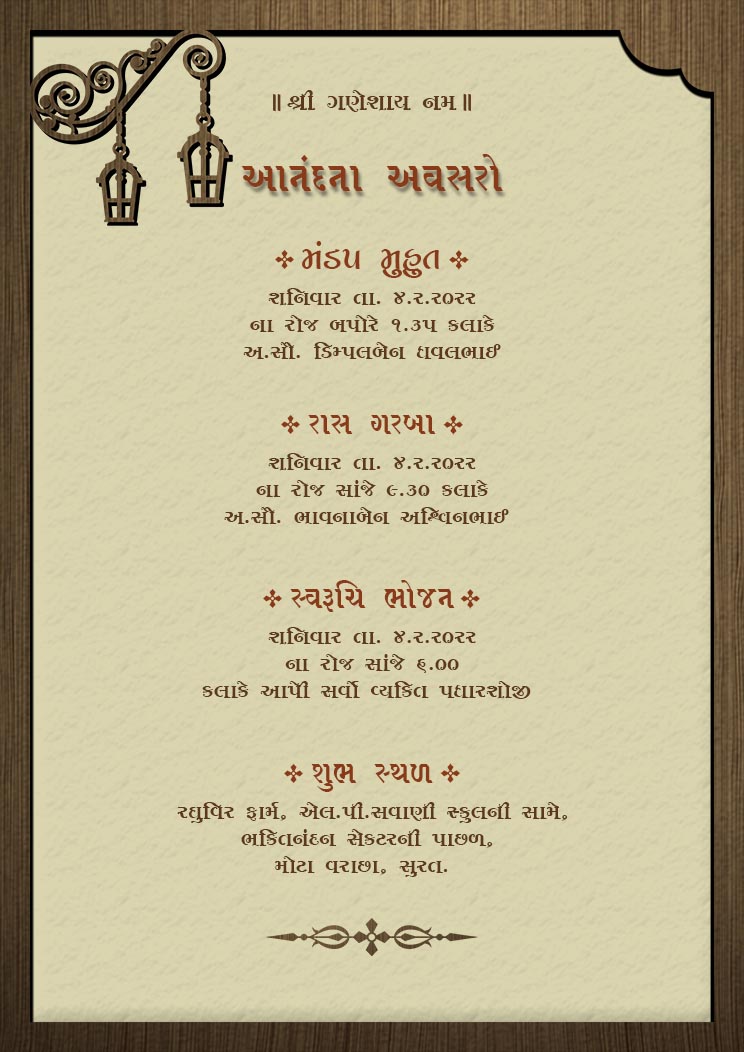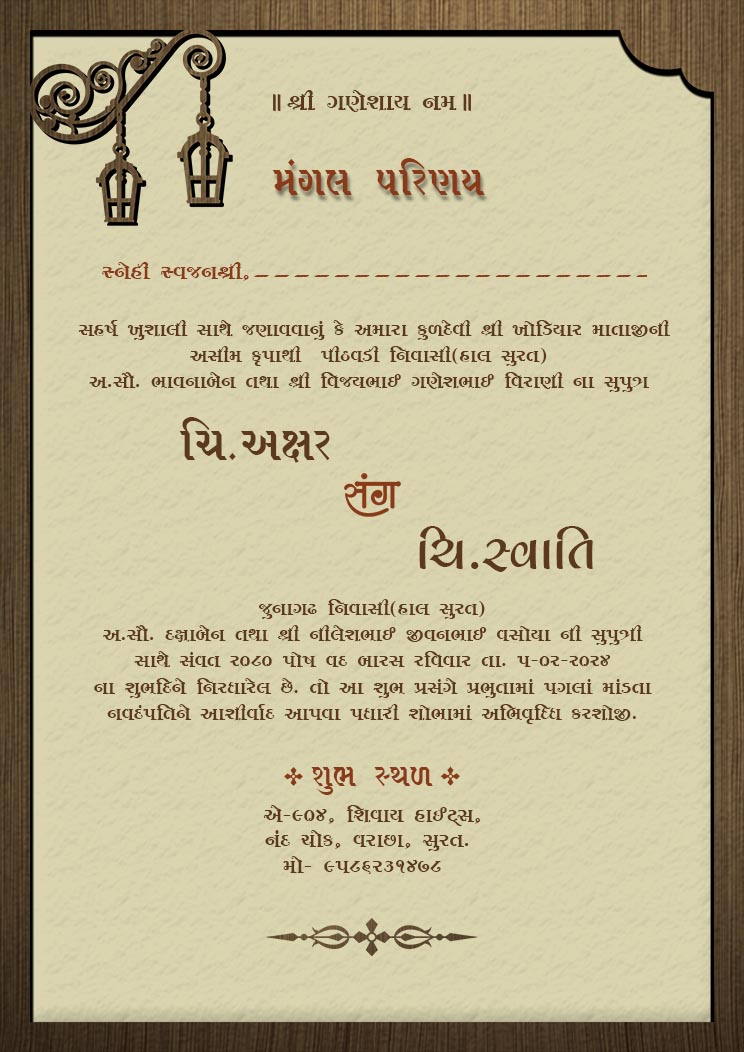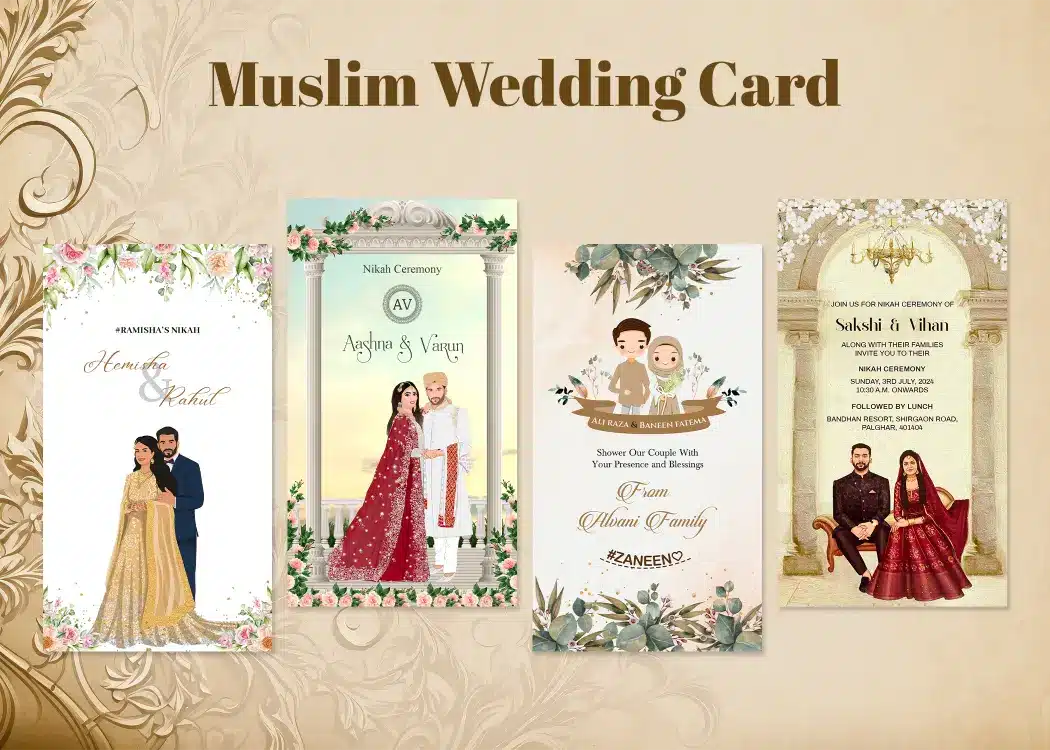In the rich tapestry of Gujarati culture, Kankotri Lakhan holds a special place. It is the art of crafting invitation letters, which serve as an essential element in any celebratory occasion, especially weddings. As traditions evolve, so does the style and format of these invitations, leading to what we now refer to as Modern Kankotri Lakhan. This article will delve into the nuances of this art form, exploring its historical significance, modern adaptations, and the importance of maintaining cultural authenticity while embracing contemporary trends.
The Evolution of Kankotri Lakhan
From Traditional to Modern: A Cultural Shift
Kankotri Lakhan has always been more than just an invitation; it is a reflection of the family’s values, traditions, and social status. Traditionally, these invitations were handwritten with great care, often adorned with intricate designs and symbolic motifs. The language used was formal, with a strong emphasis on Sanskrit verses and Gujarati proverbs that conveyed respect and reverence.
In the modern era, while the essence of Kankotri Lakhan remains unchanged, the format has undergone significant transformations. The rise of digital technology and changing social dynamics have led to the adoption of digital invitations, personalized themes, and contemporary design elements. However, the core values of respect, honor, and tradition continue to be central to the crafting of these invitations.
Key Elements of Modern Kankotri Lakhan
1. Language and Script
The language used in Modern Kankotri Lakhan remains predominantly Gujarati, with a mix of Sanskrit and English phrases. The script has also evolved from traditional calligraphy to more modern fonts that are easier to read and aesthetically pleasing. However, the use of Gujarati script is still preferred, as it retains the cultural essence of the invitation.

2. Design and Aesthetics
Modern Kankotri designs have become more minimalistic, focusing on elegance and simplicity. While traditional motifs like peacocks, lotus flowers, and OM symbols are still prevalent, they are now often integrated into more contemporary designs. The use of gold foil, embossing, and laser-cut patterns adds a touch of luxury to the invitations, making them stand out.
3. Personalization and Themes
One of the most significant trends in Modern Kankotri Lakhan is the rise of personalized invitations. Couples and families now prefer to have invitations that reflect their personal tastes, interests, and the theme of their event. This can range from floral themes to royal designs or even fusion styles that blend traditional and modern elements.
4. Digital Invitations
The digital revolution has brought about a significant change in how invitations are sent. E-invites have become increasingly popular, offering a convenient and eco-friendly alternative to traditional paper invitations. These digital invitations often include interactive elements, such as RSVP buttons, maps, and videos, making them more engaging and user-friendly.
5. Sustainability and Eco-Friendly Options
With growing awareness about environmental issues, many families are opting for eco-friendly invitations. This includes the use of recycled paper, plantable invitations, and digital alternatives. These sustainable options not only reduce the environmental impact but also add a modern touch to the age-old tradition of Kankotri Lakhan.

Crafting the Perfect Modern Kankotri
Understanding the Occasion
The first step in crafting a Modern Kankotri is understanding the occasion. Whether it’s a wedding, engagement, or any other significant event, the tone and content of the invitation should align with the nature of the celebration. For weddings, the invitation should exude grandeur and elegance, while for smaller, intimate events, a more personal and warm tone may be appropriate.
Selecting the Right Design
The design of the invitation is crucial as it sets the tone for the event. For a traditional wedding, a design that incorporates classic motifs and rich colors like red, gold, and green would be ideal. On the other hand, a modern wedding might call for a more minimalistic design with pastel colors and sleek fonts.
Choosing the Appropriate Language
While Gujarati remains the preferred language, the inclusion of English phrases can make the invitation more accessible to a broader audience. The language should be respectful and convey the importance of the occasion. The use of formal salutations and traditional blessings adds authenticity to the invitation, making it more meaningful.
Personalizing the Invitation
Personalization is key to making the invitation memorable. This could be through a custom monogram, a unique color palette, or a special message from the couple or family. Personal touches like including a favorite quote, a family crest, or even a photo can make the invitation stand out.

Ensuring Cultural Authenticity
Even as we embrace modern trends, it’s essential to maintain the cultural authenticity of the invitation. This can be achieved by incorporating traditional elements like Sanskrit verses, Gujarati proverbs, or religious symbols. These elements remind us of our roots and add a layer of depth and meaning to the invitation.
The Importance of Kankotri Lakhan in Gujarati Weddings
In Gujarati weddings, the Kankotri is more than just an invitation; it is a symbol of the family’s heritage and values. The process of crafting the perfect Kankotri is often a collaborative effort, involving input from family members, priests, and sometimes even professional calligraphers. The invitation serves as a formal announcement of the union and sets the tone for the entire event.
In modern times, while the format of the Kankotri may have evolved, its significance remains unchanged. It is still considered an essential part of the wedding rituals, and great care is taken to ensure that the invitation reflects the family’s traditions and the couple’s personalities.
Conclusion: Embracing the Future While Honoring the Past
Modern Kankotri Lakhan is a beautiful blend of tradition and innovation. While the design and format may have evolved to suit contemporary tastes, the essence of the Kankotri remains rooted in Gujarati culture. By embracing modern trends like digital invitations and personalization while maintaining cultural authenticity, we can ensure that this cherished tradition continues to thrive in the years to come.
Feel free to submit more guest posts through Links Building Servcies - Best Prices. Buy Author Account / 1$ Guest Post Here




![How to transfer money from Robinhood to bank account? [Steps]](https://hollywoodrag.com/wp-content/uploads/2024/08/Banking-Across-Europe.jpg)



















